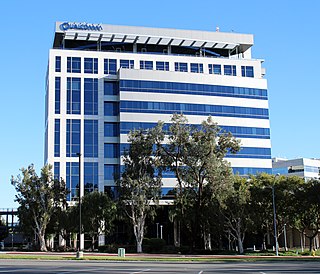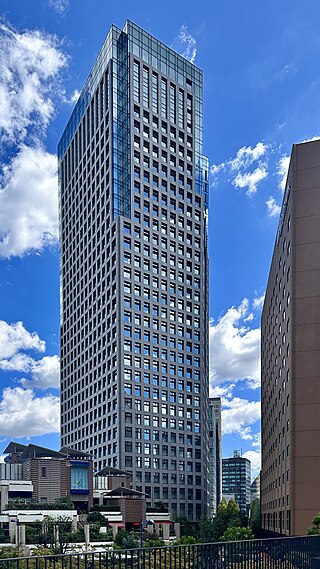A personal communications service (PCS) is set of communications capabilities that provide a combination of terminal mobility, personal mobility, and service profile management. This class of services comprises several types of wireless voice or wireless data communications systems, typically incorporating digital technology, providing services similar to advanced cellular mobile or paging services. In addition, PCS can also be used to provide other wireless communications services, including services that allow people to place and receive communications while away from their home or office, as well as wireless communications to homes, office buildings and other fixed locations. Described in more commercial terms, PCS is a generation of wireless cellular-phone technology, that combines a range of features and services surpassing those available in analogue- and first-generation (2G) digital-cellular phone systems, providing a user with an all-in-one wireless phone, paging, messaging, and data service.

Qualcomm Incorporated is an American multinational corporation headquartered in San Diego, California, and incorporated in Delaware. It creates semiconductors, software, and services related to wireless technology. It owns patents critical to the 5G, 4G, CDMA2000, TD-SCDMA and WCDMA mobile communications standards.
Verizon is an American wireless network operator that previously operated as a separate division of Verizon Communications under the name Verizon Wireless. In a 2019 reorganization, Verizon moved the wireless products and services into the divisions Verizon Consumer and Verizon Business, and stopped using the Verizon Wireless name. Verizon is the second-largest wireless carrier in the United States, with 143.3 million subscribers at the end of Q2 2023.

KDDI Corporation is a Japanese telecommunications operator. It was established in 2000 through the merger of DDI, KDD (ケイディディ), and IDO. In 2001, it merged with a subsidiary named Au, which was formed through the merger of seven automotive and mobile phone companies from the DDI-Cellular Group. As of 2020, it is the second-largest mobile telecommunications provider in Japan in terms of the number of contracts, following NTT Docomo.

SK Telecom Co., Ltd., abbreviated as SKT is a South Korean wireless telecommunications operator and former film distributor and is part of the SK Group, one of the country's largest chaebols. It leads the local market with 50.5 percent share as of 2008. SK Telecom is the largest wireless carrier in South Korea, with 27.019 million subscribers as of Q4 2017.

Kyocera Corporation is a Japanese multinational ceramics and electronics manufacturer headquartered in Kyoto, Japan. It was founded as Kyoto Ceramic Company, Limited in 1959 by Kazuo Inamori and renamed in 1982. It manufactures industrial ceramics, solar power generating systems, telecommunications equipment, office document imaging equipment, electronic components, semiconductor packages, cutting tools, and components for medical and dental implant systems.

Binary Runtime Environment for Wireless was an application development platform created by Qualcomm, originally for code division multiple access (CDMA) mobile phones, featuring third-party applications such as mobile games. It was offered in some feature phones but not in smartphones. First developed in 1999, as a platform for wireless applications on CDMA-based mobile phones, it debuted in September 2001. As a software platform that can download and run small programs for playing games, sending messages, and sharing photos, the main advantage of Brew MP was that the application developers can easily port their applications among all Brew MP devices by providing a standardized set of application programming interfaces. Software for Brew MP enabled handsets can be developed in C or C++ using the freely downloadable Brew MP software development kit (SDK). The BREW runtime library is part of the wireless device on-chip firmware or operating system to allow programmers to develop applications without needing to code for system interface or understand wireless applications. BREW is described as a pseudo operating system, but not a true mobile operating system. BREW was not a virtual machine such as Java ME, but it runs a native code.

The Kyocera QCP-6035 was one of the first smartphones to appear in the American market, released in January 2001, one of the first devices to combine a PDA with a mobile phone. Its predecessor was the Qualcomm pdQ released in 1999, built by Qualcomm's handset division, which Kyocera acquired in 2000.
TracFone Wireless, Inc. (TFWI) is an American prepaid, no-contract mobile phone provider. TFWI is a subsidiary of Verizon Communications, and offers products and services under several brands. It operates as a mobile virtual network operator (MVNO), holding agreements with the three largest United States wireless network operators to provide service: AT&T Mobility, T-Mobile US, and Verizon.

Alltel was a landline, wireless and general telecommunications services provider, primarily based in the United States. Before its wireless division was acquired by Verizon Wireless and AT&T, Alltel provided cellular service to 34 states and had approximately 13 million subscribers. As a regulatory condition of the acquisition by Verizon, a small portion of Alltel was spun off and continued to operate under the same name in six states, mostly in rural areas. Following the merger, Alltel remained the ninth largest wireless telecommunications company in the United States, with approximately 800,000 customers. On January 22, 2013, AT&T announced they were acquiring what remained of Alltel from Atlantic Tele-Network for $780 million in cash.
United States Cellular Corporation is an American mobile network operator. It is a subsidiary of Telephone and Data Systems Inc.. The company was formed in 1983 and is headquartered in Chicago, Illinois. UScellular is the fifth-largest wireless carrier in the United States, with 4,656,000 subscribers in 426 markets in 21 states as of the 2nd quarter of 2023. The organization was previously known as United States Cellular Corporation and U.S. Cellular.

Sprint Corporation was an American telecommunications company. Before being acquired by T-Mobile US on April 1, 2020, it was the fourth-largest mobile network operator in the United States, serving 54.3 million customers as of June 30, 2019. The company also offered wireless voice, messaging, and broadband services through its various subsidiaries under the Boost Mobile and Open Mobile brands and wholesale access to its wireless networks to mobile virtual network operators.

Cricket Wireless is an American prepaid wireless service provider, owned by AT&T. It provides wireless services to ten million subscribers in the United States. Cricket Wireless was founded in March 1999 by Leap Wireless International. AT&T acquired Leap Wireless International in March 2014, and later merged Cricket Wireless operations with Aio Wireless. Cricket Wireless competes primarily against T-Mobile's Metro, Dish's Boost Mobile and Verizon's Visible in the prepaid wireless segment.

Airspan Networks is an American telecommunications company headquartered in Boca Raton, Florida. The company develops Radio Access Network technology including the Sprint 'Magic Box' and cells for the Rakuten virtualized network.

UNISOC, formerly Spreadtrum Communications, Inc., is a Chinese fabless semiconductor company headquartered in Shanghai which produces chipsets for mobile phones. UNISOC develops its business in two major fields - consumer electronics and industrial electronics, including smartphones, feature phones, smart audio systems, smart wear and other application fields; Industrial electronics cover the fields such as LAN IoT, WAN IoT and smart display.

In telecommunications, long-term evolution (LTE) is a standard for wireless broadband communication for mobile devices and data terminals, based on the GSM/EDGE and UMTS/HSPA standards. It improves on those standards' capacity and speed by using a different radio interface and core network improvements. LTE is the upgrade path for carriers with both GSM/UMTS networks and CDMA2000 networks. Because LTE frequencies and bands differ from country to country, only multi-band phones can use LTE in all countries where it is supported.
Pantech Wireless, Inc. (PWI), formed in 2002, is the North American subsidiary of Pantech, one of Korea’s three largest mobile phone manufacturers.

The Japanese mobile phone industry is one of the most advanced in the world. As of March, 2022 there were 199.99 million mobile contracts in Japan according to the Ministry of Internal Affairs and Communications. This is 158 percent of Japan's total population.
Intel Mobile Communications (IMC), is the mobile research and development division of Intel. It was formed when Intel completed the acquisition of the Wireless Solutions (WLS) division of Infineon early in 2011 for US$1.4 billion. The Infineon subsidiary Comneon was also acquired by Intel and integrated into Intel Mobile Communications. IMC maintained offices in Munich from the Comneon deal under Intel Mobile Communications GmbH.

Mobi, Inc. is a wireless carrier founded in 2004 and based in Honolulu. The company provides service on each of the major islands of Hawaiʻi. The company is an operator member of the GSMA, the Competitive Carriers Association, and the Pacific Telecommunications Council.














